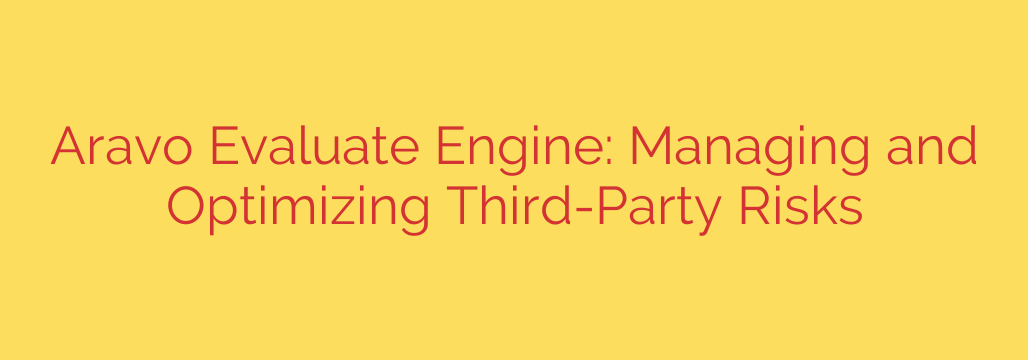
Mastering Third-Party Risk: A Strategic Imperative for Business Resilience
In today’s interconnected business landscape, the reliance on third parties – vendors, partners, suppliers, and even contractors – is ubiquitous. While these relationships drive innovation and efficiency, they also introduce significant risk. Effectively managing and optimizing third-party risks is no longer optional; it is a critical strategic imperative for ensuring business resilience, protecting brand reputation, and maintaining regulatory compliance.
Uncontrolled third-party risk can manifest in various forms, including data breaches, operational disruptions, financial losses, and legal penalties. Organizations must implement robust processes to evaluate, monitor, and mitigate these potential threats throughout the entire third-party lifecycle, from initial onboarding and due diligence through ongoing monitoring and eventual offboarding.
A truly effective approach goes beyond simple checklists. It requires a sophisticated system capable of handling complex evaluation criteria, automating tedious tasks, and providing actionable insights. The goal is not just to identify risks, but to proactively manage them in a way that supports business objectives and optimizes resources.
Key capabilities essential for streamlining third-party risk management include:
- Automated Onboarding and Due Diligence: Efficiently collecting necessary information, documentation, and attestations from third parties.
- Comprehensive Risk Assessment: Utilizing dynamic questionnaires, risk scoring, and evidence collection to understand the specific risk profile of each third party based on their classification, scope of engagement, and criticality.
- Integrated Evaluation Workflows: Orchestrating reviews across different internal departments (security, compliance, legal, procurement) to ensure a holistic evaluation.
- Continuous Monitoring: Staying informed about changes in a third party’s risk posture through alerts, news feeds, and periodic reassessments.
- Issue Management and Remediation: Tracking identified risks and ensuring timely completion of corrective actions.
- Centralized Data Repository: Maintaining a single source of truth for all third-party information and risk data.
- Reporting and Analytics: Providing clear visibility into the overall risk landscape, individual third-party risks, and program performance.
By implementing a system that incorporates these features, organizations can transform their approach to third-party risk. This leads to increased efficiency, reduced manual effort, faster onboarding times, and, most importantly, a stronger defense against potential third-party-related incidents.
Ultimately, successful third-party risk management is about proactive risk mitigation and fostering secure and reliable partnerships. Leveraging advanced capabilities to automate and optimize evaluations allows businesses to navigate the complexities of modern relationships with confidence, ensuring they can innovate and grow securely.
Source: https://www.helpnetsecurity.com/2025/06/17/aravo-evaluate-engine/








